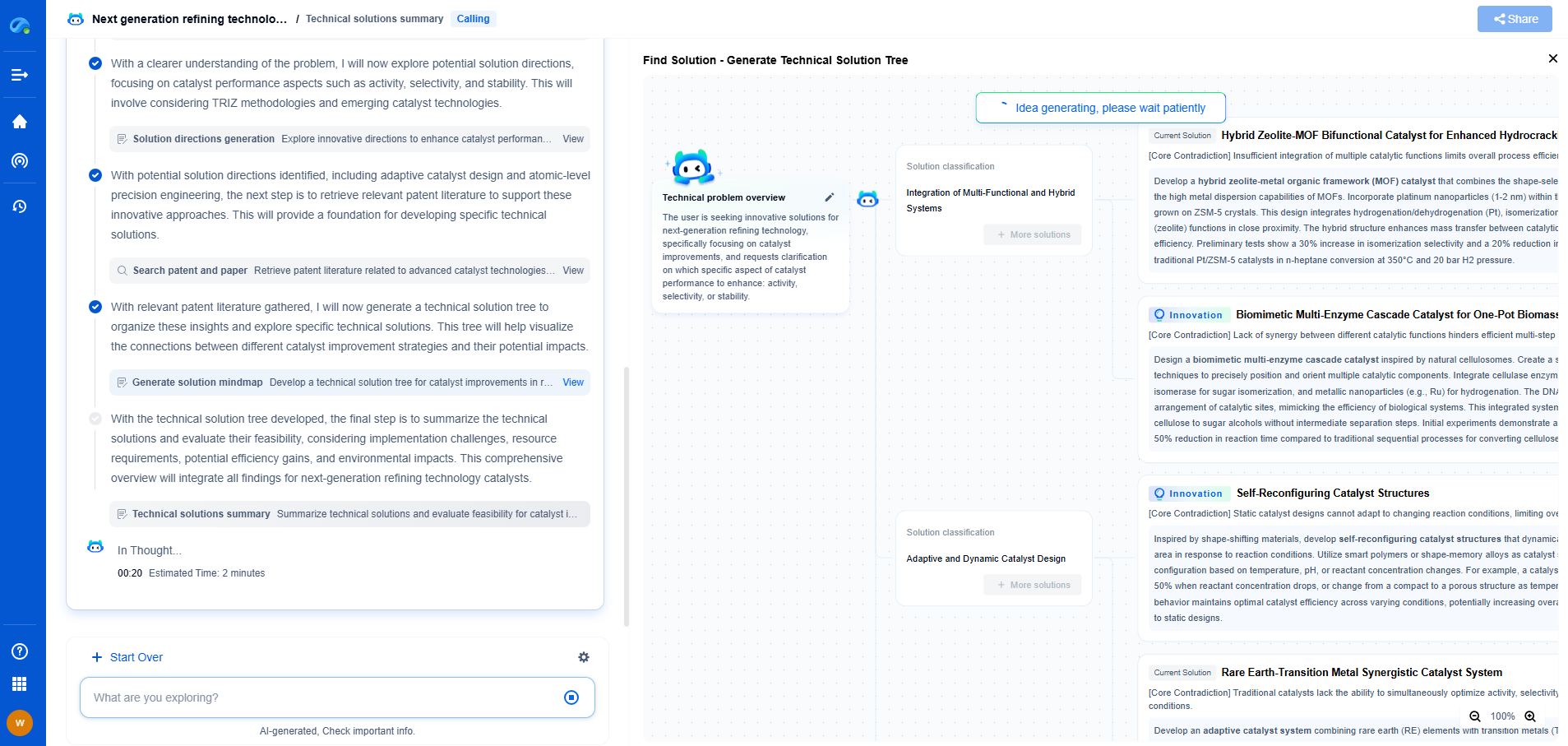What Is the Difference Between GaN and GaAs in RF Applications?
JUN 27, 2025 |
In the world of radio frequency (RF) applications, selecting the right semiconductor material can significantly affect the performance and efficiency of devices. Among the most prominent materials used are Gallium Nitride (GaN) and Gallium Arsenide (GaAs). Both have unique properties that make them suitable for different applications, but understanding their differences is crucial for engineers and designers working in RF technology.
Material Properties and Characteristics
Gallium Nitride (GaN) is a wide bandgap semiconductor known for its high electron mobility, thermal conductivity, and breakdown voltage. These properties make GaN an excellent choice for high-power and high-frequency applications. GaN can operate efficiently at higher voltages and temperatures, which allows for smaller, lighter components with higher power densities.
On the other hand, Gallium Arsenide (GaAs) is a compound semiconductor with lower electron mobility compared to GaN but is still advantageous for certain applications. GaAs has excellent electron velocity and is useful for RF devices operating at lower power levels. It is particularly appreciated for its superior noise performance, which is critical in low-power RF applications like mobile phones and satellite communications.
Performance in RF Applications
When it comes to RF applications, GaN is often favored for high-power transmission systems such as radar, satellite communications, and cellular base stations. Its ability to handle higher power levels and withstand harsh environmental conditions makes GaN devices ideal for applications requiring robust and reliable performance.
GaAs, however, shines in applications that demand high linearity and low noise, such as RF amplifiers and low-noise amplifiers (LNAs). Although GaAs-based devices can be less efficient in terms of power handling compared to GaN, they can offer better signal fidelity for applications where maintaining signal integrity is paramount.
Cost and Manufacturing Considerations
Cost is another critical factor when choosing between GaN and GaAs for RF applications. GaN devices often have higher initial costs due to the complexity of fabrication and the need for specialized substrates like silicon carbide (SiC) or sapphire. Nevertheless, the long-term savings in energy consumption and device longevity can justify the investment in many high-power RF systems.
GaAs, being a more mature technology, generally comes with lower manufacturing costs, which can be a decisive factor for budget-sensitive projects. Its established production processes and widespread availability make GaAs a more economical choice for mass-market RF applications, especially when the power demands are modest.
Future Trends and Developments
Looking forward, the RF semiconductor landscape continues to evolve, with both GaN and GaAs playing critical roles. Advances in GaN technology promise further increases in efficiency, frequency range, and power handling capabilities, potentially making GaN the go-to choice for cutting-edge RF systems.
Conversely, GaAs technology is also advancing, particularly in the realm of integrated circuits and mixed-signal applications. As RF applications continue to require higher performance at lower costs, the ongoing innovation in GaAs design and manufacturing could sustain its relevance in the industry.
Conclusion
In summary, GaN and GaAs each have distinct advantages in RF applications, and the choice between them largely depends on the specific requirements of the application. GaN is ideal for high-power, high-frequency environments, whereas GaAs offers superior performance in low-power, high-linearity scenarios. Understanding the strengths and limitations of each material allows engineers to make informed decisions that optimize the performance and efficiency of their RF devices.
Unlock Next-Gen Innovation in Communication Technology with Patsnap Eureka
The field of communication technology is evolving at breakneck speed—from 5G and satellite systems to next-gen wireless protocols and quantum communications. Staying ahead demands more than just information—it requires strategic insights, real-time patent intelligence, and a deep understanding of technological trajectories.
Patsnap Eureka, our intelligent AI assistant built for R&D professionals in high-tech sectors, empowers you with real-time expert-level analysis, technology roadmap exploration, and strategic mapping of core patents—all within a seamless, user-friendly interface. Whether you're optimizing signal processing designs, navigating 3GPP standards, or exploring IP strategies for IoT and 6G networks, Eureka helps you move faster, think deeper, and innovate smarter.
Try Patsnap Eureka today—and see how it can transform the way you work across the entire communication technology innovation lifecycle.
- R&D
- Intellectual Property
- Life Sciences
- Materials
- Tech Scout
- Unparalleled Data Quality
- Higher Quality Content
- 60% Fewer Hallucinations
Browse by: Latest US Patents, China's latest patents, Technical Efficacy Thesaurus, Application Domain, Technology Topic, Popular Technical Reports.
© 2025 PatSnap. All rights reserved.Legal|Privacy policy|Modern Slavery Act Transparency Statement|Sitemap|About US| Contact US: help@patsnap.com

